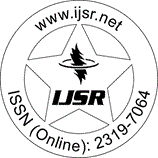Downloads: 5
India | Orthopaedic Surgery | Volume 14 Issue 3, March 2025 | Pages: 800 - 804
Clinical and Functional Outcomes of Arthroscopic Rotator Cuff Repair Using the Double Pulley - Triple Row Technique
Abstract: Arthroscopic rotator cuff repair is the gold standard for treatment, but current techniques have shortcomings, especially for larger tears. Single - row repairs often fail to fully restore the footprint, leading to high retear rates. Although triple - row and double - row repairs show promise, concerns regarding retear persist. Biomechanical studies favor triple - row repair for better coverage and pressure distribution. Techniques such as linked double - row and double - pulley methods enhance strength. Secondary cuff failures near the musculotendinous junction are commonly caused by stress concentration. To address these challenges, novel methods have employed linked, knotless, and bridging constructs. Our approach, the double pulley - triple row, aims to minimize retears, especially at the musculotendinous junction, and provides uniform pressure distribution, which is particularly beneficial for large tears. The surgical steps involve standard arthroscopic procedures with specific instruments. Despite these challenges, our method integrates proven techniques to optimize outcomes, promising improved results in rotator cuff repair. This study provides valuable insights into the biomechanical advantages of the double pulley - triple row technique in reducing retears and improving clinical outcomes. Given the high failure rates of existing methods, this innovative approach could enhance the long - term success of arthroscopic rotator cuff repairs. Objective: This study aims to assess the functional and clinical outcomes of arthroscopic rotator cuff repair using the double pulley - triple row technique in patients with rotator cuff tears. Methods: We prospectively evaluated 34 patients who underwent arthroscopic rotator cuff repair using the double pulley - triple row technique. Pre and post - operative assessments included Oxford shoulder score and Quick disabilities of the arm, shoulder and hand questionnaire. Results: The mean Quick Disabilities of the Arm, Shoulder, and Hand (QuickDASH) score improved from 46.1 preoperatively to 15.6 at final follow - up for massive rotator cuff repairs. Along with that the Oxford Shoulder Score improved significantly (p?
Keywords: Rotator cuff repair, arthroscopic surgery, double pulley technique, triple row repair, tendon healing
How to Cite?: Dr. Biswajit Sahu, Dr. Ranajit Panigrahi, Dr. Unmesh Kumar Sahoo, "Clinical and Functional Outcomes of Arthroscopic Rotator Cuff Repair Using the Double Pulley - Triple Row Technique", Volume 14 Issue 3, March 2025, International Journal of Science and Research (IJSR), Pages: 800-804, https://www.ijsr.net/getabstract.php?paperid=SR25316131121, DOI: https://dx.doi.org/10.21275/SR25316131121
